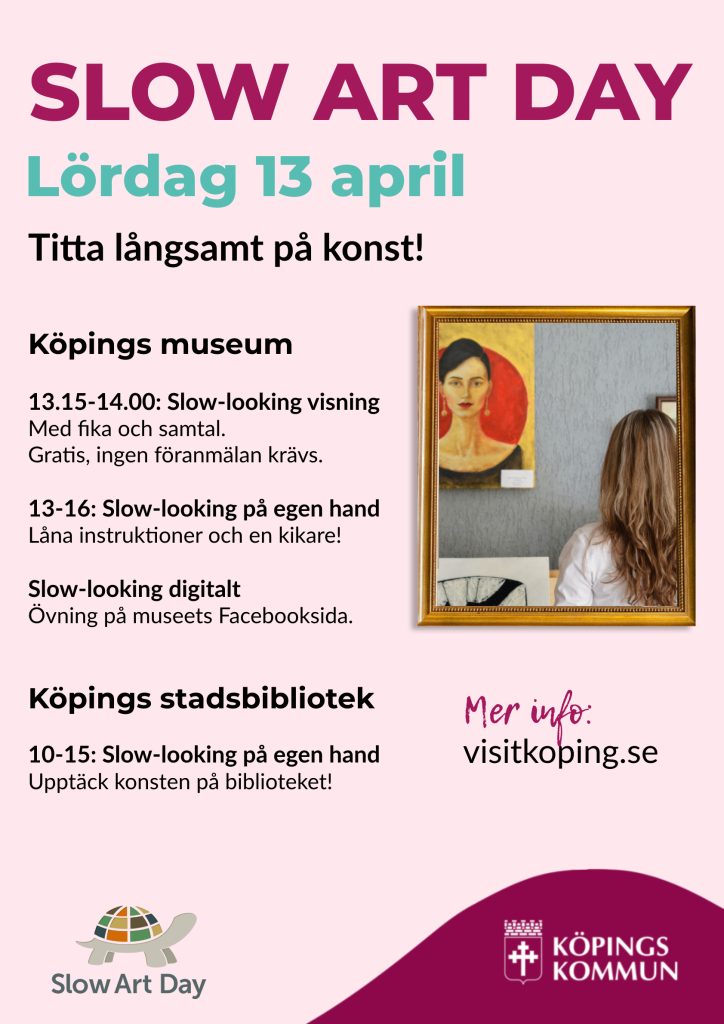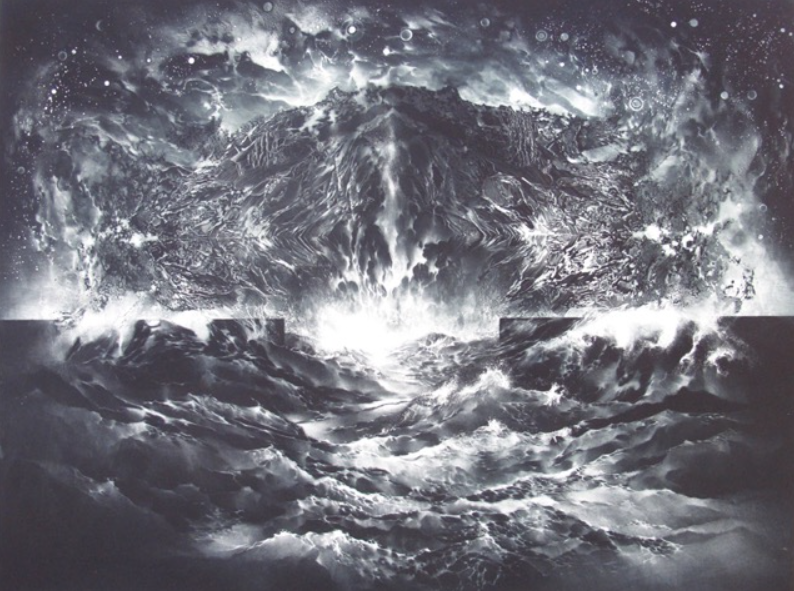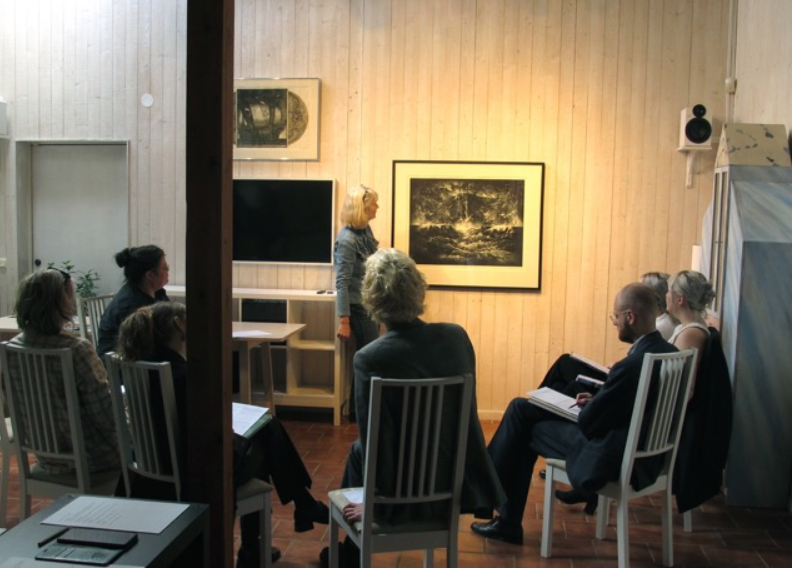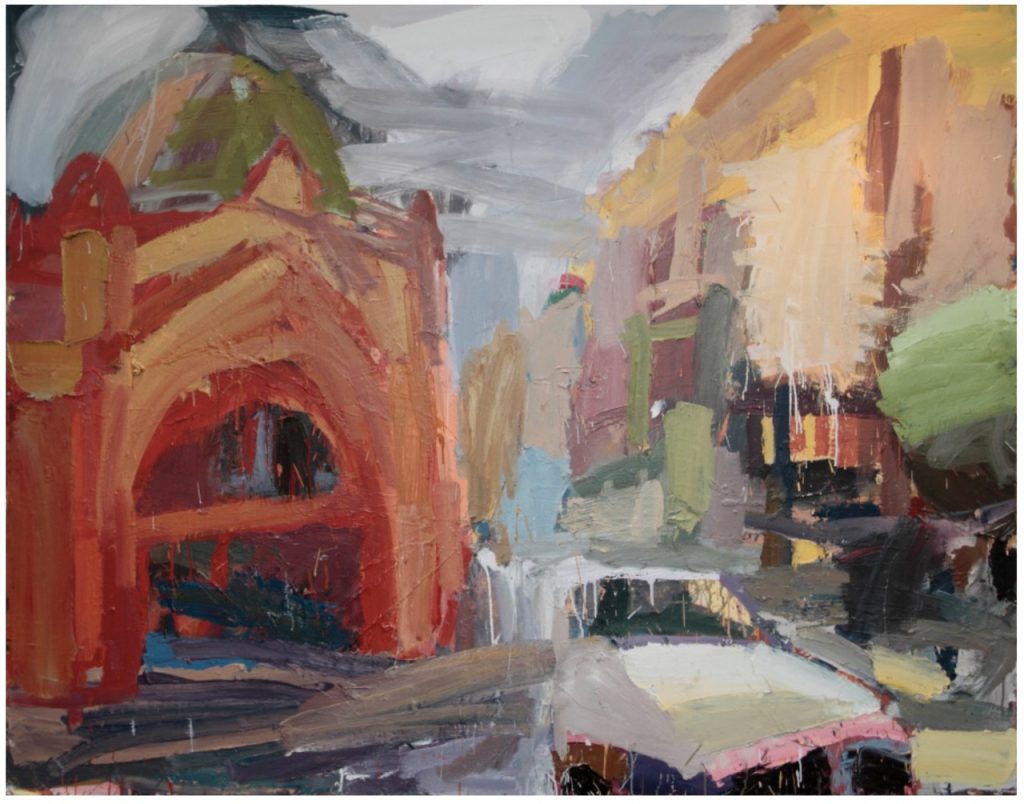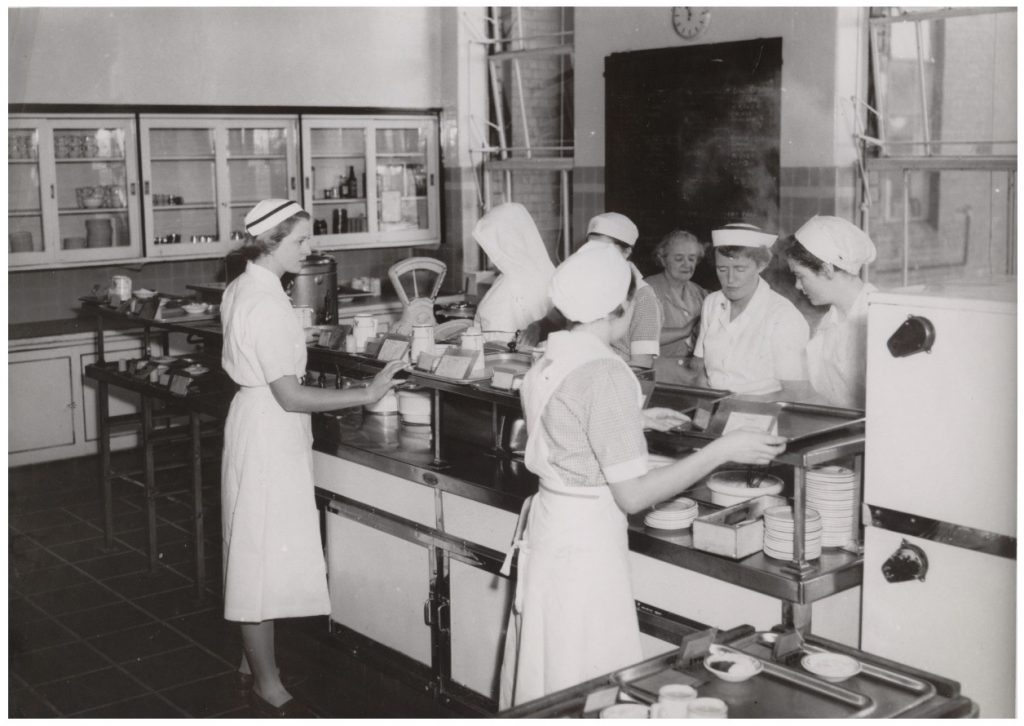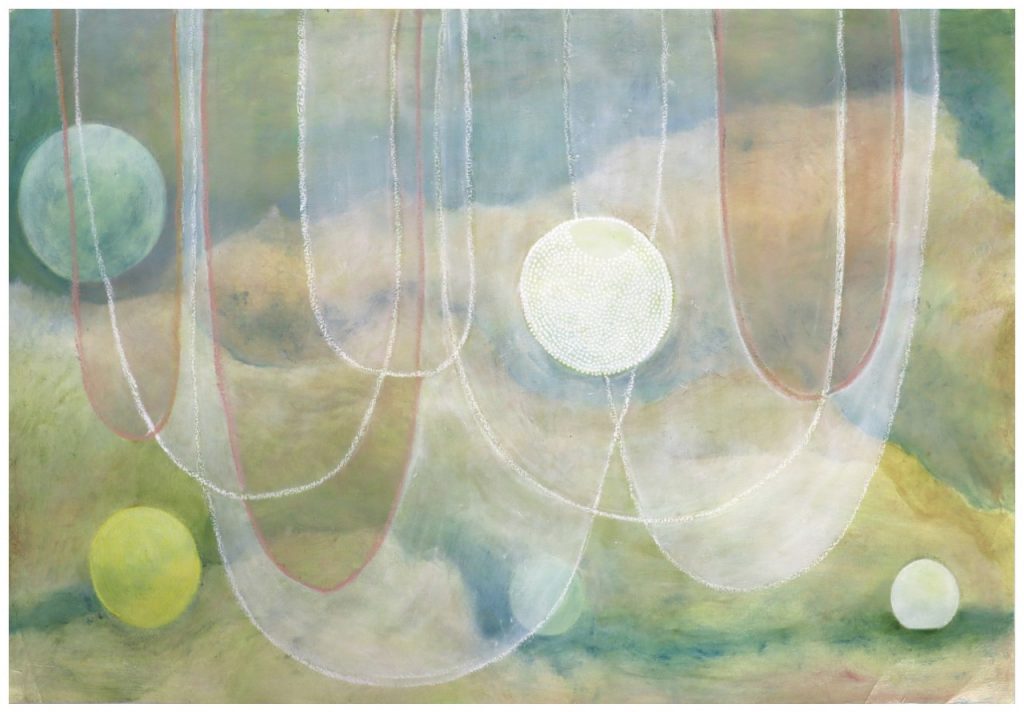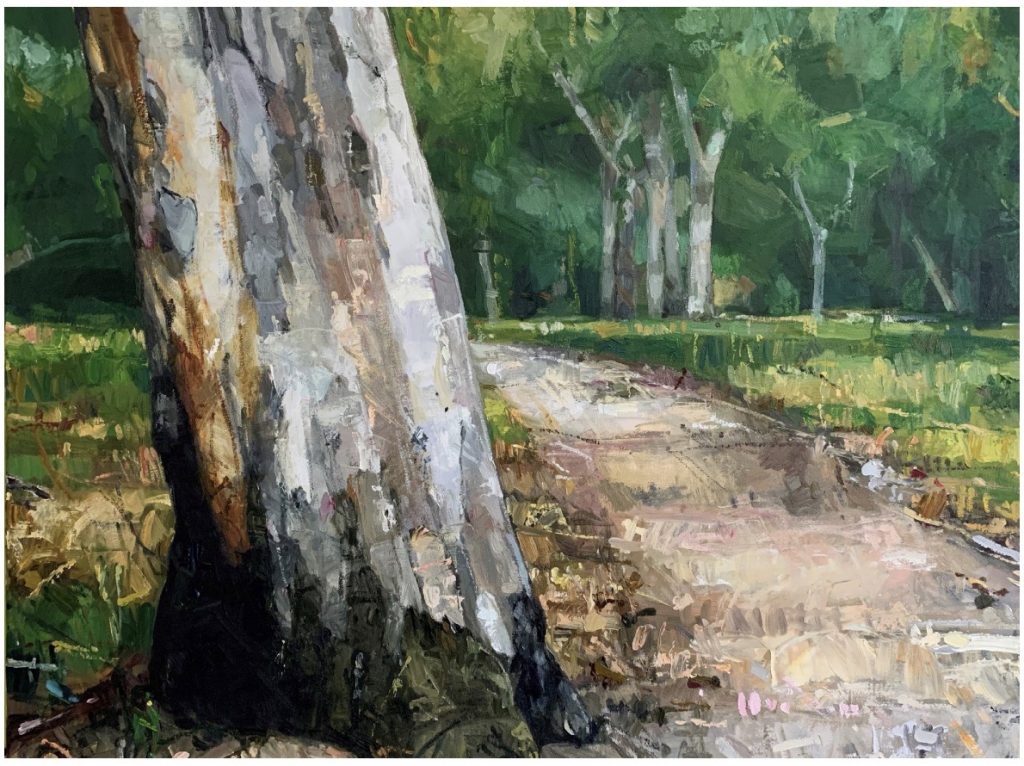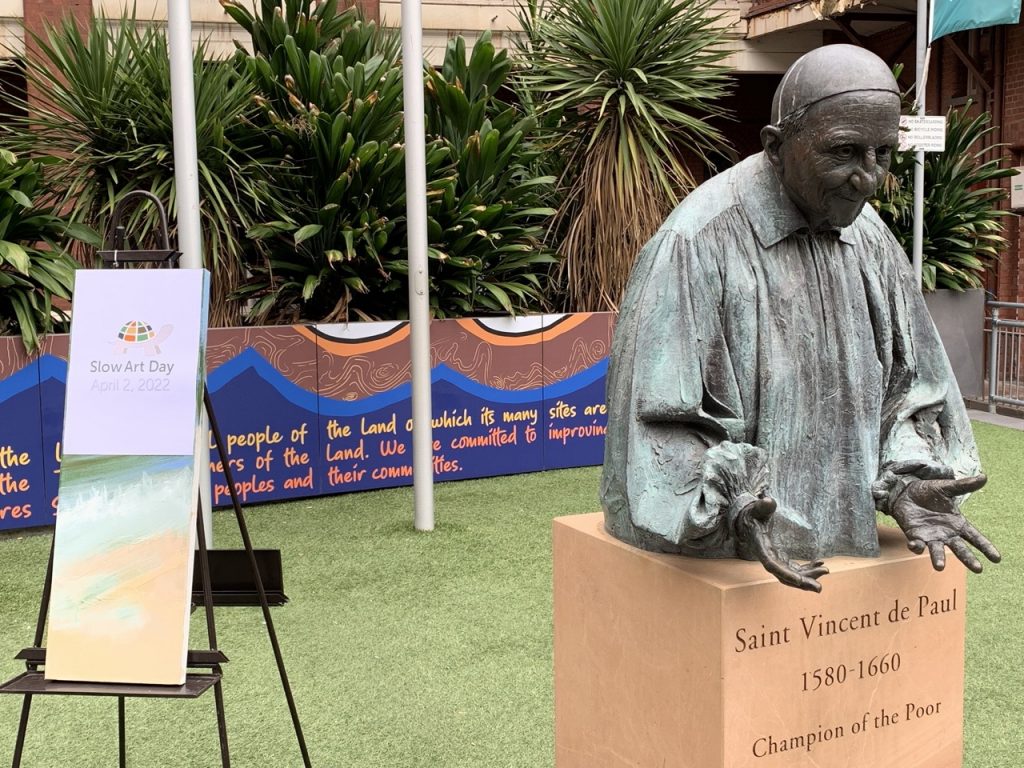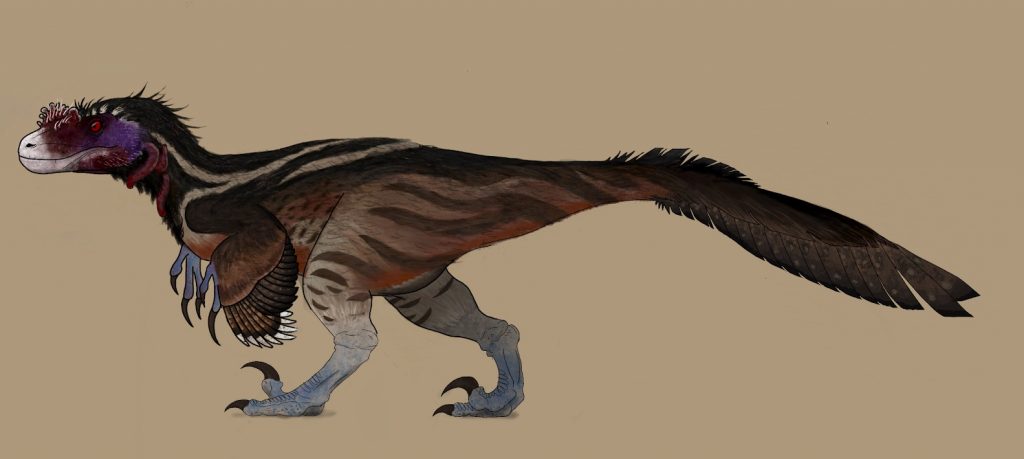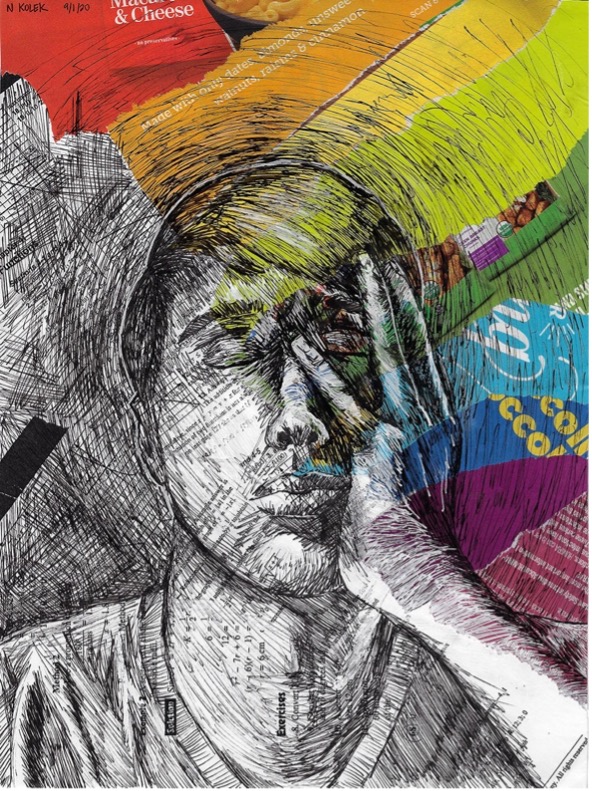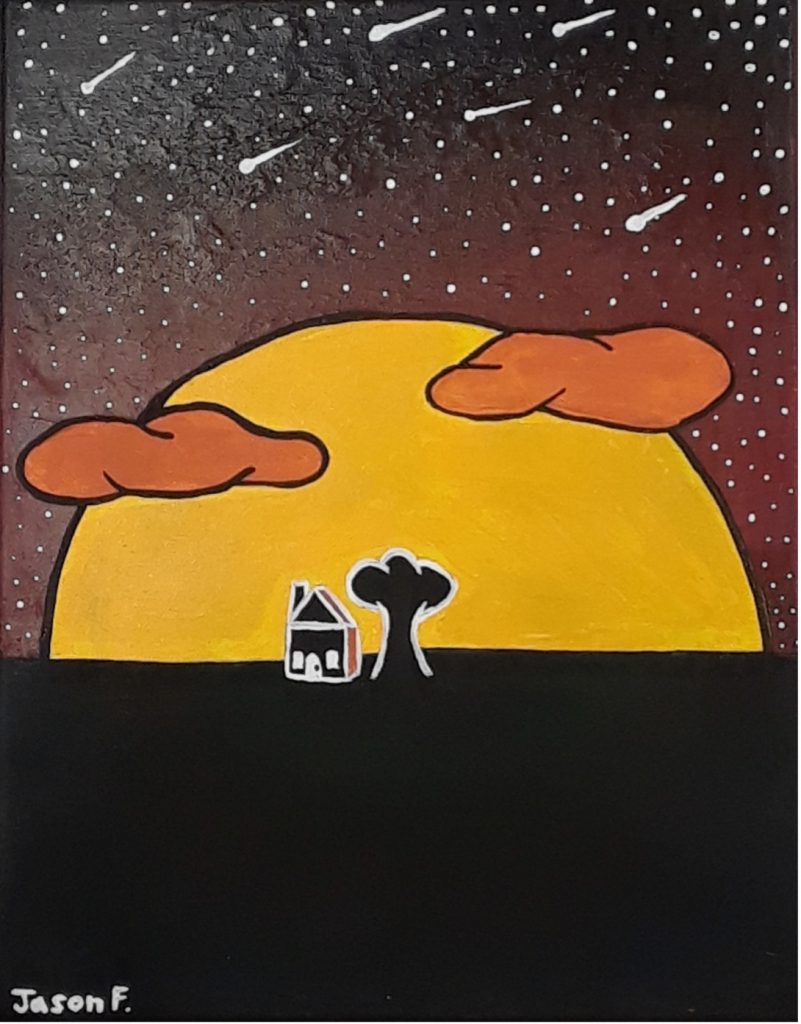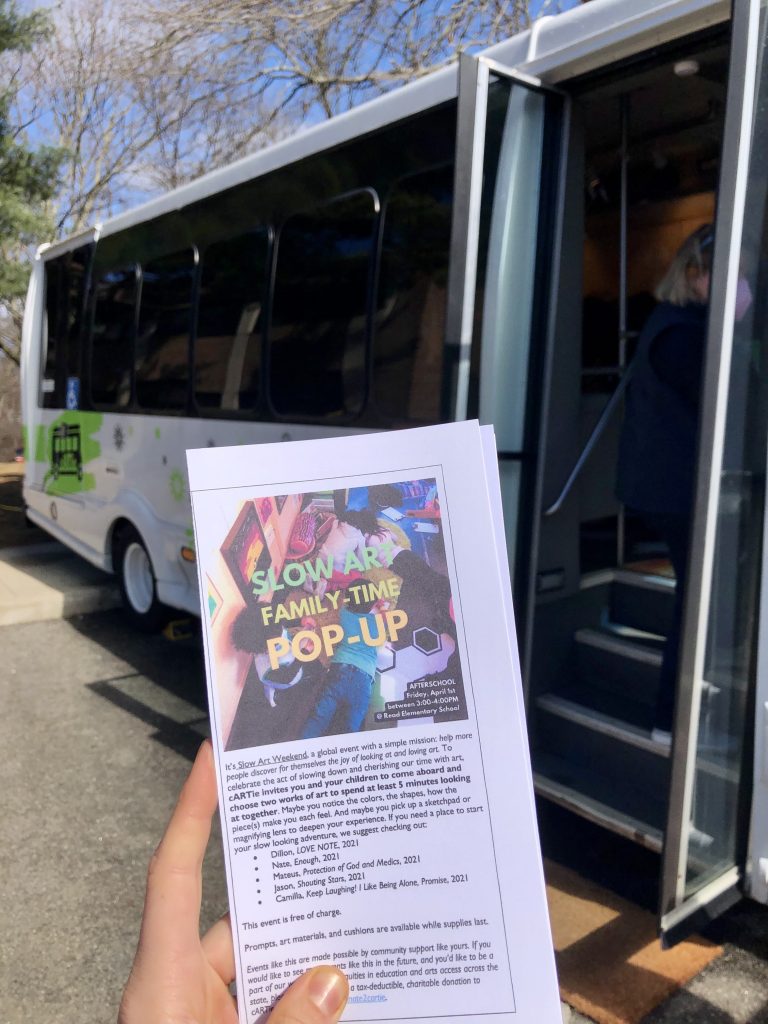This year the city-wide Slow Art Day phenomenon continued in Bloomington, Illinois, with 20(!) participating museums and art galleries. And, for the third year running, Angel Ambrose Fine Art Studio participated.

For their contribution to the citywide Slow Art Day, Angel Ambrose featured “Tell Me Stories”, a painting that had been on long-term loan at Illinois State University’s Alumni Center on Michigan Avenue in Downtown Chicago.

On Slow Art Day, Angel invited visitors of all ages to the studio gallery to take a slow look and hear about the stories behind the painting between 10 AM – 2 PM.
Angel welcomed all participants and asked them to take 3-5 minutes or more to contemplate “Tell Me Stories” or another artwork using some of the following prompts for slow looking.
She came up with some good prompts, as you see below.
—- Prompts
For your head (objective thought/intellect) you can consider any of the following:
- What did you see?
- What decisions did you notice that Angel made in her painting—line, color, texture, form, repetition, contrast, etc?
- Was there a color scheme/theme apparent?
- Notice the paint—can you see individual brushstrokes, or a smooth surface, or perhaps another tool was used to apply the paint?
- How was movement used in the artwork?
- Was the piece representational, abstracted, or somewhere between? Why do you think Angel chose this format?
For your heart (feelings/emotions), consider the following:
- How did you feel when you looked at the work?
- Did the colors evoke any emotions?
- What did these feelings make you think about?
- Did your mood change after looking at the artwork?
- Did you experience any personal significance to the piece?

During the day, visitors could also visit any of the 20 Bloomington Slow Art Day locations free of charge. The day concluded with a closing reception at The Hangar Art Co. from 2 – 4 PM for participants from all venues.
The Eaton Gallery was the first to host a Slow Art Day in Bloomington. In 2020 at the height of the pandemic, they organized a walk up/drive by exhibition. Then in 2022 Eaton and other Bloomington galleries pioneered hosting a city-wide Slow Art Day – and Angel Ambrose was in that original group.
At Slow Art Day HQ we have eagerly followed the growth of Slow Art Day in Bloomington along Route 66. We (unsurprisingly) like to take things slow, but the fast spread of the citywide movement in Bloomington (and now around the world) both calms and excites us.
We can’t wait to see what Angel Ambrose Fine Art Studio comes up with for Bloomington’s citywide Slow Art Day in 2025.
-Johanna, Ashley, Jessica Jane, and Phyl
P.S. Stay up to date with events at Angel Ambrose Fine Art Studio via their Facebook page.
P.P.S. We are hearing rumors that the state of Illinois might host a *statewide* Slow Art Day in 2025. Stay tuned.






